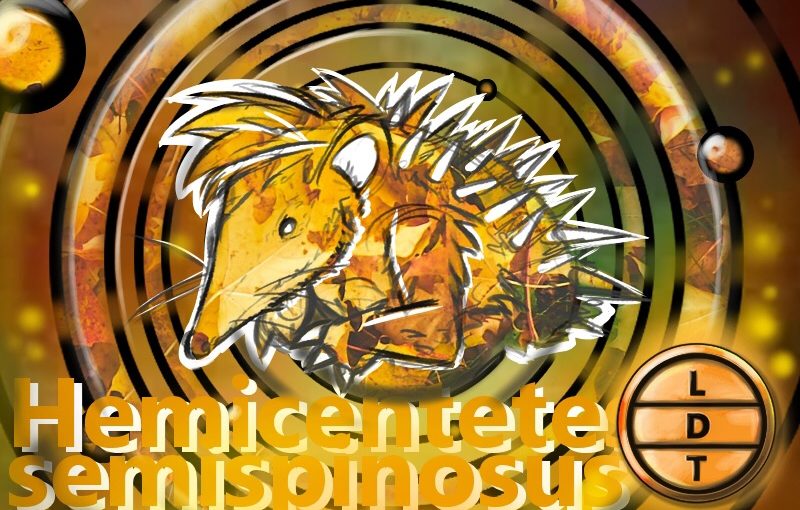“And today we are talking the lowland streaked tenrec, about a spiky mamma that looks like a cross between a hedgehog and a shrew but is actually neither.”
Lowland Streaked Tenrec Intro
The search is vast and they’ve got to be fast
To catch the worms in the twilight hours.
The moon is high and brief is the night
That conceals them from predatory powers.
Click click calls the spines of the Tenrec,
Stay together or become a casualty.
That’s the only way to make it to day,
In Life, Death, and Taxonomy.
Sources and Credits:
Lost Frontier by Kevin MacLeod is licensed under a Creative Commons Attribution license (https://creativecommons.org/licenses/by/4.0/)
Source: http://incompetech.com/music/royalty-free/index.html?isrc=USUAN1300039
Music Artist: http://incompetech.com/
Episode Art: xnamaru
BBC Video: Attenborough and clicking tenrecs
Measure Up
Body Length – 140 mm (5.5 inches) – How many lowland streaked tenrecs go into the thickness of the worlds thickest book (322 mm, 12.6 inches)? Hint: All Agatha Christie’s Miss Marple stories – 12 novels and 20 short stories – are collected and published in this volume. The book contains 4,032 pages and weighs 8.04 kg. Answer: 2.2 tenrecs
Weight – 203 g (7 oz) – How many hydrogen atoms go into the weight of a lowland streaked tenrec? Hint: There is one mole of hydrogen in one gram of hydrogen atoms. Answer: 12,220,600,000,000,000,000,000,000 (twelve septillion two hundred and twenty two sextillion atoms). 26 digit.
Major Fact
Lowland streaked tenrecs are the only mammals in the world to stridulate!
Stridulation is producing sound by rubbing body parts together. Insects are the most common stridulators, they stridulate by rubbing legs, wings, body segments together.
- Crickets
- Grasshoppers
- Ants
- Beetles
- Katydids
- Tarantulas
- Some snakes rub their scales together to produce a sizzling sound.
Lowland streaked tenrecs will rub special spines together to create a clicking sound. The quills are located in the middle of their back. Made of keratin like your hair and fingernails. Tenrecs can move the quills on their backs when threatened. These special quills can move independently. The tips rub together to make a click or snapping sound. This can be used for three possible reasons.
To communicate between mother and young.
BBC captured a lost juvenile tenrec rejoining his family when a parent started to stridulate. To alert others to predators or
Intimidate predators. Tenrecs have a great sense of smell. When they catch a whiff of a predator, their quills will point up and forward. Then they vibrate the quills to make a scary sound. They also stamp their little feet as if to say, “not today, snakes.”
They may also possibly click with their tongues to echolocate. When the BBC film crew used instruments that detect high frequency sounds they found that tenrecs are almost constantly communicating. This could mean they are using the clicks to get around the dark forest at night.
No one is quite sure why they communicate with both their mouths and their quills. Typically, mammals that make calls use vocalization for all auditory communication. Possibley to cut through the din of the forest as Attenborough says.
Outro
Hey, Taxonomy Titans! Tenrecs may be the only mammals that communicate with stridulation but humans are the animals to communicate with social media! We aren’t prickly tenrecs! We’d love to hear from you. If you want to give us feedback, send us your favorite animal memes, or give us episode ideas, you can find us on Facebook, Gmail, Twitter, and now introducing… Instagram! Just search us by the name LDtaxonomy on all the social medias! And as always, your reviews on iTunes and other podcast apps go a long way in tickling our fancies! Thanks for listening and supporting your local homegrown podcasts.

